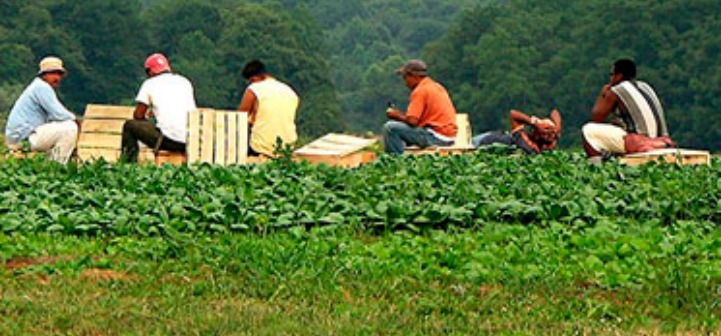
The process of change from a multicultural perspective will ask individuals and organizations to consider many new and exciting thoughts, ideas and processes. Change is a process that must be intentional, purposeful and fluid. Oftentimes the process of multicultural change is one that almost exclusively centers on the “other” in the relationship as the place where change should occur. In my attempts to work more effectively, thereby, more authentically with communities of difference, it has been important for me to begin any process of change as a journey of self-focus, self-excavation and self-reflection.
In my own personal journey, it has been important to keep present the duality of my multicultural reality; that is, that I have membership in both target groups and a non-target groups. Target groups are groups that are targeted as “less than” or different because of their race, gender, age, sexual orientation, role or job, and other differences. Non-target groups are defined as groups that are more likely to receive privileges and benefits in a society and who believe that their “way” is better.1 In any given situation, I am an elder, 40+ years old and Latino [target group] and a male, middle and owning class, heterosexual, U.S. born, a person without disabilities and an English speaker [non-target group]. These group memberships, along with the actions, behaviors and reactions that are associated with each, have an impact on my ability to work effectively and authentically with communities of difference. Moreover, when I can operate from a place of healing of my target group experiences and understand when I am operating from my points of privilege and in less authentic ways from my non-target group status, I may be able to incorporate ideas such as trust, sustainability, authenticity and community in-reach.
Operating in relationships across differences from a place of trust and authenticity that are grounded in sustainability and community in-reach, will, over time lead to new and exciting opportunities. These opportunities will engage individuals and organizations with new audiences, lead to individual and organizational growth, and result in the continued relevancy of any organization willing to commit to this ongoing process. Committing to and incorporating these tenants on the individual and institutional levels will assist as a foundation for multicultural change.
Trust
A key foundational tenet for developing and maintaining healthy relationships across differences is the development and preservation of trust. Trust goes beyond the desire of individuals or organizations of difference to be engaged in an interaction together. It must be a mutually defined relational principle that needs continuous work and updating. It is effortful, intentional and ongoing. Developing trust across difference requires active listening that is focused on understanding others’ realities and holding those differing realities as relevant as my own. Trust is centered on the ability to reduce denial and defensiveness and a commitment to remaining in the relationship and “at the table” as the relationship develops and when tension or discomfort arises. Trust is identifying where we get stuck and how we will work collectively to keep the relationship intact operating from a place of wholeness, health and authenticity. Helpful questions to keep in mind when developing trust across differences are:
1. Why would the target group I am interested in working with desire to be involved with my organization or me?
2. What are my motives for wanting to be involved in this relationship? Are those motives foundational principles to building trust or are they obstacles?
Trust (continued)
3. What history of involvement does my organization have with the target group? What obstacles or opportunities does this history present to the relationship?
4. What personal excavation and work must I continually do to understand my privileges, my assumptions and prejudgments, and other potential barriers toward building trust as both parties continue working more closely together?
5. When interacting with individuals who are culturally different from myself, what reactions or internal messages do I receive that trigger defensiveness or denial on my part? What do I need to do for myself to work through these reactions to build and maintain a trusting relationship?
Sustainability
One of the true indicators of a successful multicultural relationship, collaboration or initiative is whether or not it is maintained over time and leads to other opportunities that capitalize on each other’s assets and strengthen the alliance. Although conditions for sustainability may not be measurable until the end of a process, it must be a goal of an authentic multicultural process, and intentional and purposeful planning must be integrated into all aspects of the relationship from beginning to end. It is also important that sustainability be a mutually defined and agreed upon goal, which is constantly discussed, updated and open for redefinition. Helpful questions to keep in mind when developing sustainability across differences are:
1. What characteristics and systems of mutual accountability will need to be a part of the relationship in order for there to be sustainability of the relationship or effort?
2. How are target group members involved in all aspects of the process and empowered to discuss the desire to sustain the relationship or effort beyond the original funding source, length of initiative defined in the original proposal, or when the relationship becomes internally or externally difficult?
3. What personal or non-target group characteristics must I examine that can be obstacles to sustainability? Do I need to be aware of issues related to control? Do I need to be aware of issues related to a well intentioned “savior mentality,” where my thoughts are centered on having all the right solutions and approaches to an issue and coming in to rescue the target group?
4. What do I need to be concerned about related to my tendency to operate from a monocultural approach to how a relationship or effort should be developed or sustained?
Community In-Reach Instead of Community Outreach
Many of us have been involved in community out-reach programs and initiatives. Although they may be needed, helpful and impactful, they are often based on maintaining relationships, intentionally or unintentionally, that are grounded in power and control. Many of these efforts begin with the assumption that people in non-target groups have all the “right” knowledge, information or programs, and that they need to spend time with target group members and show them what they need out of the kindness of their hearts. Moreover, non-target individuals can then tell others about their good deeds and feel great about themselves. They might even be able to receive additional funding or accolades from this endeavor while never having developed any long lasting connection with the community in which they served. These efforts are often grounded in a “savior mentality,” where individual’s thoughts are centered on having all the right solutions and approaches to an issue and coming in to rescue the target group. Additionally, these efforts based from a “savior mentality,” may include good intentions but result in limited impact, multiple levels of frustrations, and cursory relationship building.
On the other hand, community in-reach efforts can be characterized as those efforts that begin with the premises that all parties entering into the relationship have assets and that combining these assets can lead to authentic community efforts that can be established and maintained. It is less centered on maintaining power and control, and it focuses on establishing trust and genuineness. Community in-reach efforts are grounded in all parties’ willingness to be humble, patient, open to learning about themselves and others, flexible and adaptable, and committed to doing what is needed – not what is most expedient. Helpful questions to keep in mind when wanting to create community in-reach efforts across differences are:
1. What are my individual and organizational motives for wanting to do work with target groups or a target group community?
2. How will I create a process that allows for the assets of all involved to be honored?
3. What measures will be used that allow all involved to recognize when they have created a community in-reach effort that can be a model for future collaborations?
Authentic Relationships
It is important to work toward authenticity in relationships across differences. Authenticity moves beyond a mere friendship or working affiliation. It is based on trust, honesty, genuineness, responsibility to each other, willingness to be open and humble, willingness to take risks, and the understanding that tension in the relationship is a necessary component that will lead to growth. Individuals in this type of relationship practice self-focus, are more concerned about the impact of their words and actions vs. the intent, are collaborative in nature rather than competitive, are committed to being in an active and ongoing process of personal change, and constantly question their inherent biases and prejudices. Authenticity also encourages and nurtures opportunities for all engaged to heal from the ravages of oppression and work toward bringing a wholeness of spirit and mind into the relationship. Helpful questions to keep in mind when wanting to create authenticity in relationships across differences are:
1. What intentional work have I done on the personal level to understand the realities of individuals who are different from myself? In addition, what work have I done to understand the totality of my own cultural identity as a way of being conscious of my privileges?
2. Am I willing to speak my truth about my target group experiences and what will need to be present in the relationship for this to occur?
3. Am I willing to listen deeply as individuals of difference speak about the pain and reality of their experiences?
4. What work do I need to do to heal from the pain of my target group experience in order to more deeply understand my non-target group experience as I work to dismantle all forms of oppression?
5. What am I willing and able to do to continue to be aware of my tendency to perpetuate “modernism” behaviors from my non-target status for example, dysfunctional rescue or avoidance of contact, etc., that hinder my ability to develop authentic relationships?
6. Once established, what will need to be present in order to nurture this authentic relationship toward further growth and understanding of all involved?
7. What are the costs to my organization, my community and me if I am not engaged in and committed to an authentic relationship with those different from myself?
1 Batts, V. (2002). Is Reconciliation Possible: Lessons from Combating “Modern Racism.” In Douglas, I. (ed.), Waging Reconciliation: God’s Mission in a Time of Globalization and Crisis (pp.35-75) New York: Church Publishing Incorporated
© November 2003––——
 ENROLLMENT FLYER Course.docx
ENROLLMENT FLYER Course.docx IDI Webinar Dec 15 2015.pptx
IDI Webinar Dec 15 2015.pptx





